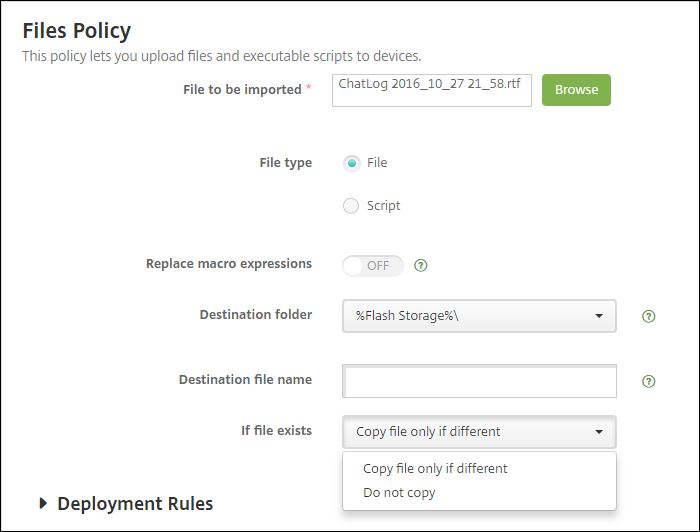-
-
-
Files device policy
This content has been machine translated dynamically.
Dieser Inhalt ist eine maschinelle Übersetzung, die dynamisch erstellt wurde. (Haftungsausschluss)
Cet article a été traduit automatiquement de manière dynamique. (Clause de non responsabilité)
Este artículo lo ha traducido una máquina de forma dinámica. (Aviso legal)
此内容已经过机器动态翻译。 放弃
このコンテンツは動的に機械翻訳されています。免責事項
이 콘텐츠는 동적으로 기계 번역되었습니다. 책임 부인
Este texto foi traduzido automaticamente. (Aviso legal)
Questo contenuto è stato tradotto dinamicamente con traduzione automatica.(Esclusione di responsabilità))
This article has been machine translated.
Dieser Artikel wurde maschinell übersetzt. (Haftungsausschluss)
Ce article a été traduit automatiquement. (Clause de non responsabilité)
Este artículo ha sido traducido automáticamente. (Aviso legal)
この記事は機械翻訳されています.免責事項
이 기사는 기계 번역되었습니다.책임 부인
Este artigo foi traduzido automaticamente.(Aviso legal)
这篇文章已经过机器翻译.放弃
Questo articolo è stato tradotto automaticamente.(Esclusione di responsabilità))
Translation failed!
Files device policy
You can add and deploy files for users to access on their Android and Android Enterprise devices. You specify the directory where you want to store the file on the device. For example, you want users to receive a company document or .pdf file. Deploy the file to devices and let users know where the file is located.
Android devices don’t support running scripts natively. Users need third-party software to run scripts.
You can add the following file types with this policy:
- Text-based files (.xml, .html, .py, and so on)
- Other files, such as documents, pictures, spreadsheets, or presentations
To add or configure this policy, go to Configure > Device Policies. For more information, see Device policies.
Android Enterprise settings

- File to be imported: To select the file to import, click Browse and navigate to the file location.
- File type: Select File.
- Destination folder: In the list, select the location in which to store the uploaded file or click Add new to choose an unlisted file location. You can use the macros %XenMobile Folder%\ or %Flash Storage%\ as the start of any path identifier.
- Destination file name: Optional. If you must change a file name before deploying it to a device, type the file name.
- If file exists: In the list, select whether to copy an existing file. The default is Copy file only if different.
Android settings
- File to be imported: Select the file to import by clicking Browse and navigating to the file’s location.
- File type: Select File.
- Destination folder: In the list, select the location in which to store the uploaded file or click Add new to choose an unlisted file location. ALSO, you can use the macros %XenMobile Folder%\ or %Flash Storage%\ as the start of a path identifier.
- Destination file name: Optionally, type a different name for the file if it must be changed before being deployed on a device.
- Copy file only if different: In the list, select whether to copy the file if it is different from the existing file. The default is to copy the file only if it is different.
Share
Share
In this article
This Preview product documentation is Citrix Confidential.
You agree to hold this documentation confidential pursuant to the terms of your Citrix Beta/Tech Preview Agreement.
The development, release and timing of any features or functionality described in the Preview documentation remains at our sole discretion and are subject to change without notice or consultation.
The documentation is for informational purposes only and is not a commitment, promise or legal obligation to deliver any material, code or functionality and should not be relied upon in making Citrix product purchase decisions.
If you do not agree, select I DO NOT AGREE to exit.